Guyana, the “Land of Many Waters,” is a vibrant tapestry of cultures, landscapes, and, of course, flavours. And what better way to experience its essence than through its seasonal fruits? Each period offers a unique bounty, bursting with colors, textures, and tastes that tantalize the senses. So, pack your bags (metaphorically, for now) and join me on a delicious journey through Guyana’s seasonal fruit basket:
Rainy Season Revelry (May-August):
Mango Mania
This is the undisputed king of the season. From the sunshine-yellow sweetness of Julie to the creamy richness of Haden, each bite is a tropical explosion. Indulge in them fresh, sliced, juiced, or even pickled – the possibilities are endless!
Mangoes are juicy stone fruit (drupe) from numerous species of tropical trees belonging to the flowering plant genus Mangifera, cultivated mostly for their edible fruit. The majority of these species are found in nature as wild mangoes. The genus belongs to the cashew family Anacardiaceae.

Mangoes – when they are yellow, you know they are ready – – Photo by Girendra Persaud/GxMedia
The ripe fruit varies in size, shape, color, sweetness, and eating quality. Cultivars are variously yellow, orange, red, or green and carry a single flat, oblong pit that can be fibrous or hairy on the surface and which does not separate easily from the pulp. (Learn more about mangoes by clicking here!)
Guava Goodness
Don’t underestimate this humble fruit. Its pink and white varieties offer a tangy punch that’s perfect for quenching your thirst or adding a zing to desserts. Pro tip: try guava cheese, a local favourite made with sweetened guava pulp and cream cheese.
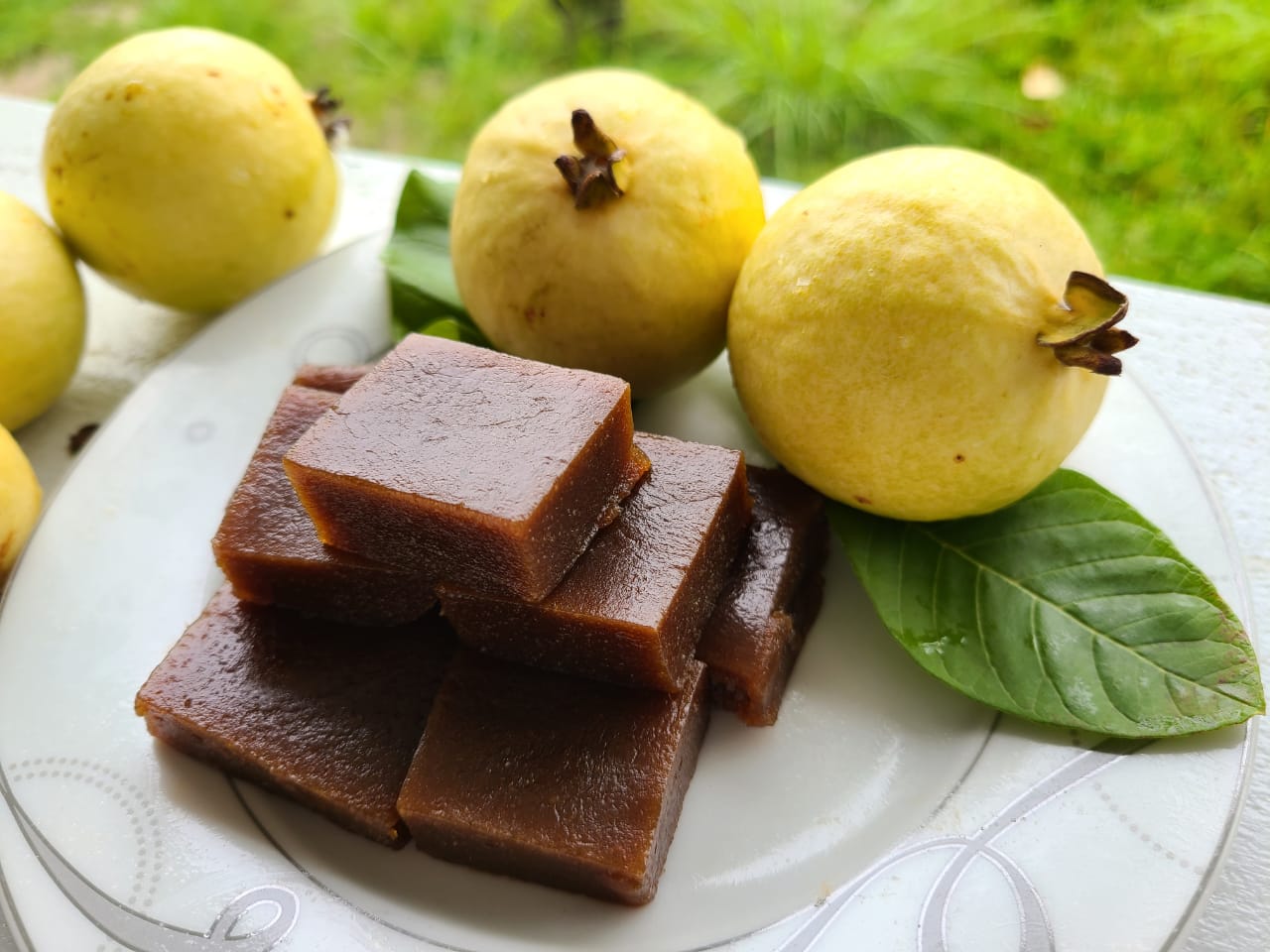
Guava Cheese – Photo by Girendra Persaud/GxMedia
Guava is very common type of fruit in Guyana. The fruit is round or pear-shaped with light green, yellow or maroon skin and white or maroon flesh that contains many small, hard edible seeds. It is soft when ripe with a sweet, musky aroma and creamy in texture. Guava has a high content of vitamins C and A. In fact, one guava fruit contains 4 times more vitamin C than an average-size orange and 10 times more vitamin A than a lemon. (Learn more about guavas here!)
Watermelon Wonderland
No rainy season is complete without this iconic fruit. Its juicy sweetness and refreshing coolness are a welcome respite from the downpours. Enjoy it sliced, cubed, or even blended into a smoothie – the choice is yours!

Watermelons (Citrullus lanatus)
Watermelons (Citrullus lanatus) are mostly water — about 92 percent — but this refreshing fruit is soaked with nutrients. It is considered as both a vegetable and a fruit. Watermelon contains about 92% water and 6% sugar. There are over 500 varieties of watermelon in the world! (Is it a fruit or vegetable? Learn more here!)
Soursop Surprise
This spiky-skinned beauty might look intimidating, but its creamy, custard-like flesh is a delightful surprise. Its unique sweet-tart flavour makes it perfect for juices, ice cream, or simply savouring on its own.
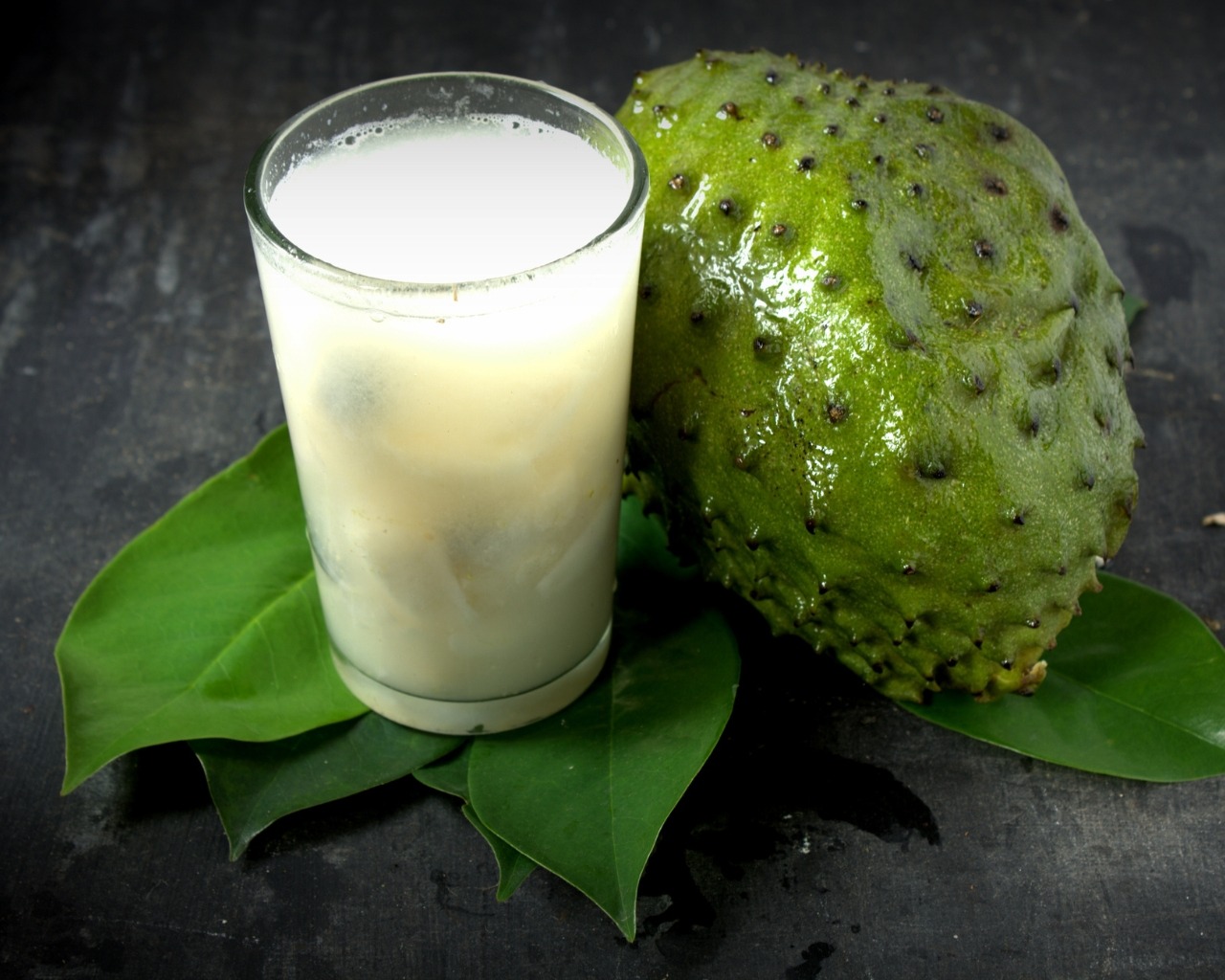
Soursop is the fruit of Annona muricata
Soursop is the fruit of Annona muricata, a broadleaf, flowering, evergreen tree. The exact origin is unknown; it is native to the tropical regions of the Americas and the Caribbean and is widely propagated. It is in the same genus, Annona, as Cherimoya and is in the Annonaceae family. (Learn of the health benefits of soursop here.)
Passion Fruit Fiesta
Get ready for a burst of flavour with this vibrant fruit. Its tangy and aromatic pulp adds a touch of magic to juices, desserts, and even cocktails. Don’t miss out on experiencing its unique tropical flair.
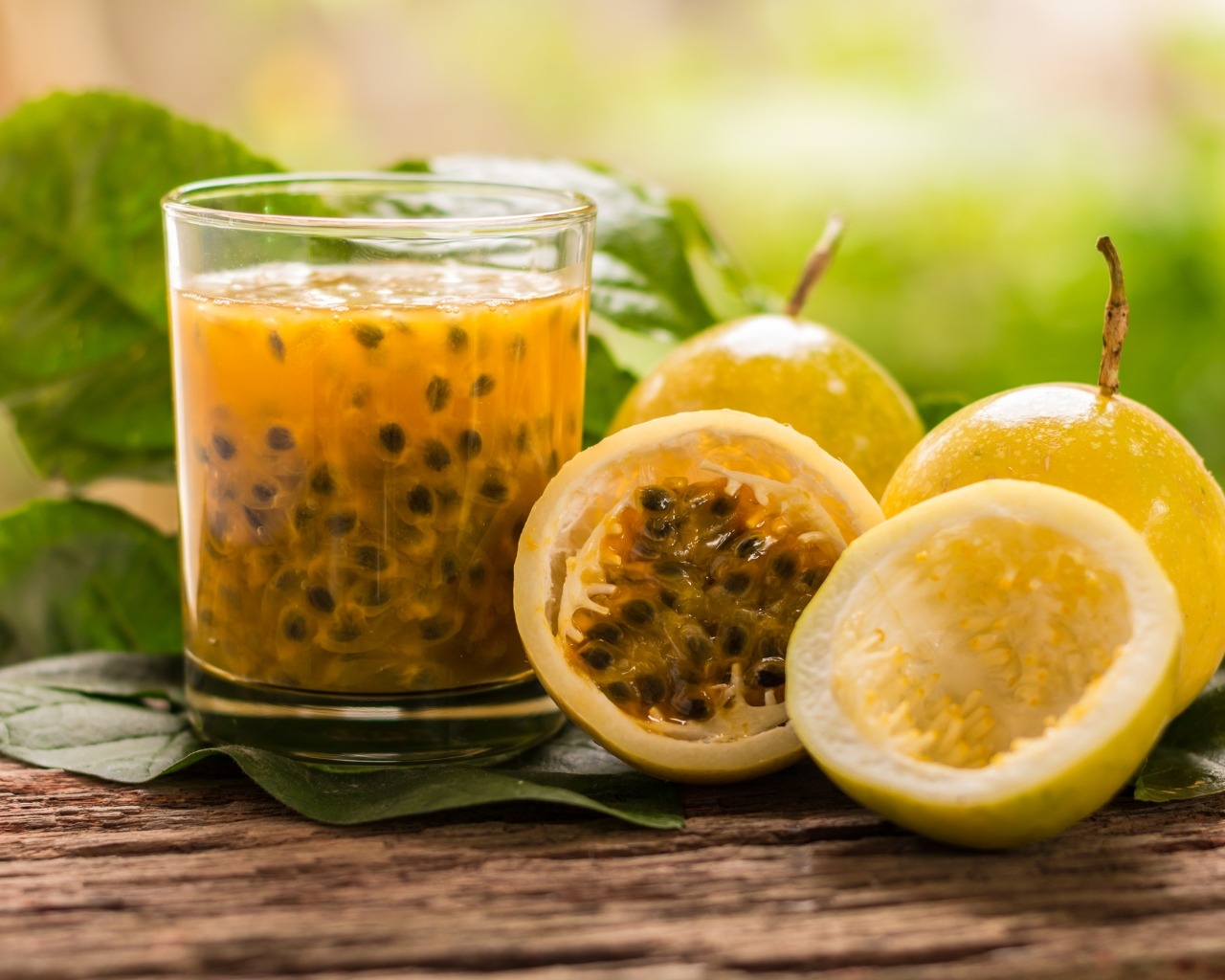
Passion Fruit is scientifically known as Passiflora edulis.
Passion fruit is a vigorous, herbaceous, perennial climber that grows about 0.5-2 m in length. The plants grow in tropical and subtropical mesic to wet environments, especially forests and scrub, forest edges, forest gaps and riparian areas in forests and usually prefer well-drained soil with plenty of moisture in the growing season. Stem is slender, angular, striate, glabrous or puberulent. (Learn about the health benefits of passion fruit here).
Dry Season Delights (September-April):
Pomegranate Power
This jewel-toned fruit is not just beautiful; it’s packed with antioxidants and boasts a sweet-tart flavour that’s perfect for snacking or adding to salads. Break open its ruby-red seeds and enjoy the juicy goodness!

The pomegranate (Punica granatum)
Pomegranate juice contains more than 100 phytochemicals. The fruit has been used for thousands of years as medicine. It is one of the healthiest fruits on the planet, packed with nutrients and powerful plant compounds. Here is everything we need to know about pomegranate. (Learn more about the health benefits of pomegranate here!).
Coconut Craving
This versatile fruit is a staple in Guyanese cuisine. Enjoy its refreshing water, creamy milk, sweet flesh, or even the aromatic oil. From savoury curries to sweet desserts, coconut adds a unique touch to every dish.
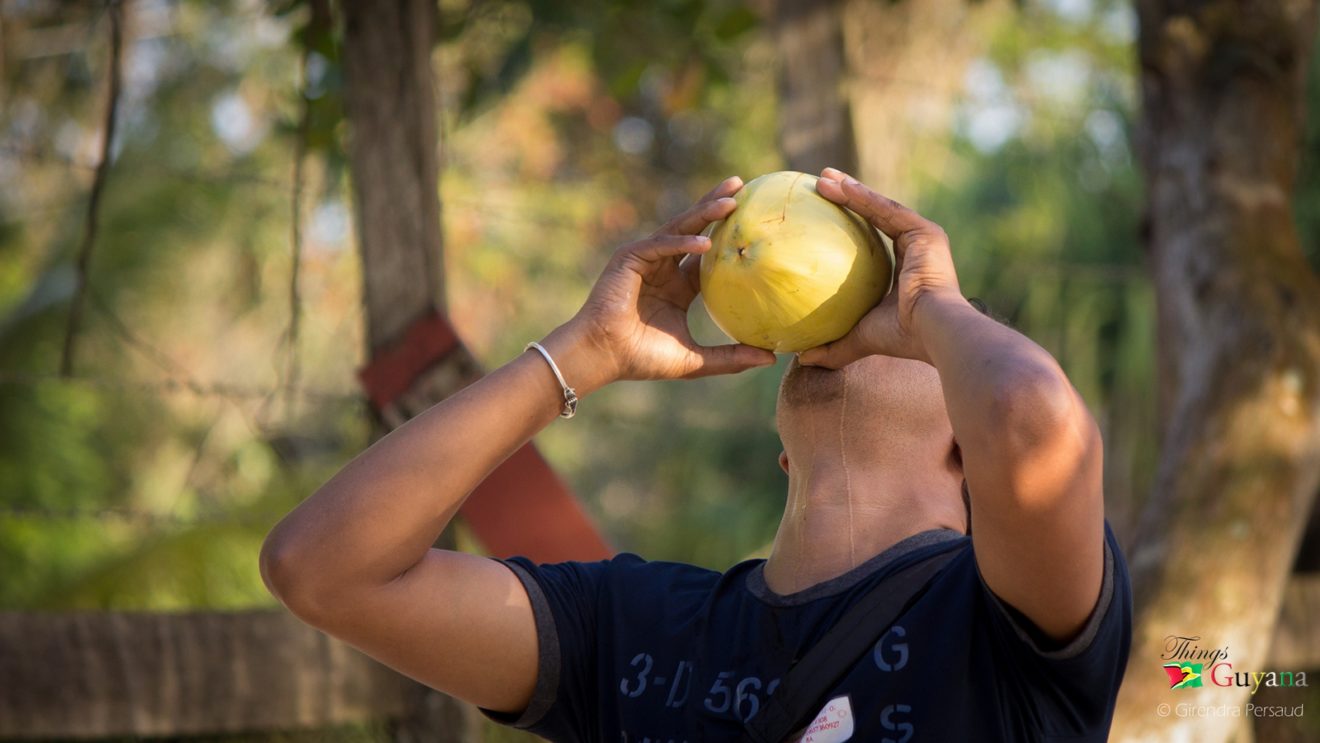
Drinking coconut water on a hot day is a Guyanese thing – Photo by Girendra Persaud/GxMedia
Coconuts are abundantly available in Guyana, and these fruits are ranked highly for the health benefits they provide.
Banana Bonanza
Available year-round, bananas are a convenient and nutritious snack. But during the dry season, they seem to reach their peak sweetness, making them even more irresistible. Enjoy them fresh, baked, fried, or blended into a creamy smoothie.
You may not associate bananas with vitamin C, but a medium-sized banana will provide about 10% of your daily vitamin C needs. Three natural sugars found in bananas are sucrose, fructose and glucose, which allows you to have a fat and cholesterol-free source of energy. As such, bananas are ideal, especially for children and athletes, for breakfast, as a midday snack or before and after sports.
Star Apple Spectacle
This unique fruit lives up to its name with its star-shaped flesh. Its creamy texture and sweet, milky flavour are a delightful treat. Enjoy it sliced or scooped out, and savour its unusual beauty.
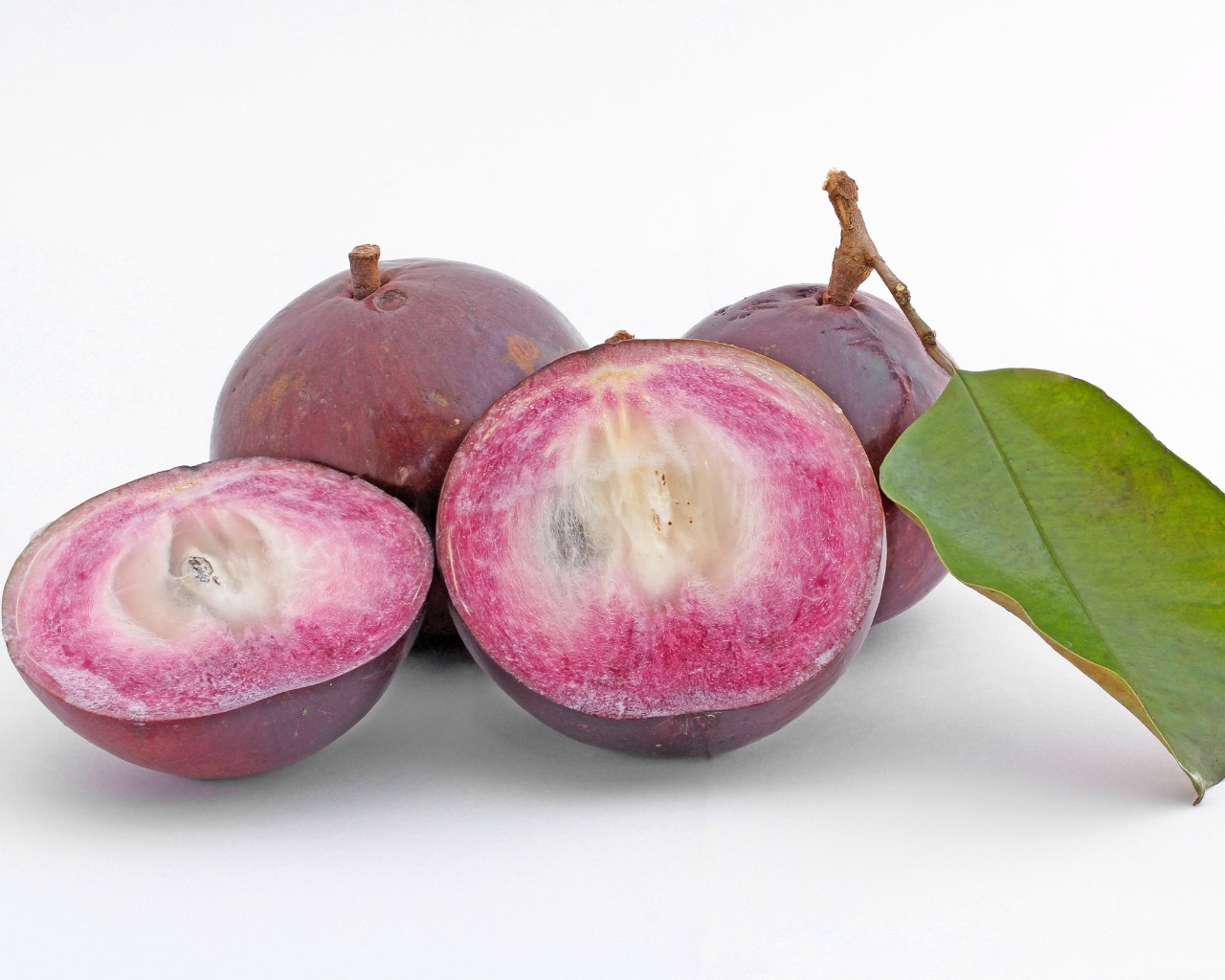
Purple star apples
Purple star apples have a thick skin attached to a rind, which is usually a dark purple colour; the dark purple fruit is 6-12.5mm thick and has a soft, milky sweet pulp that ranges from a light purplish colour to white.
Chent/Genip/Skinup Sensation
This seasonal fruit might have several names, but its taste is unforgettable. Its green, wrinkly skin hides a sweet, jelly-like flesh that’s enjoyed fresh or preserved. Don’t miss out on this unique Guyanese delicacy!
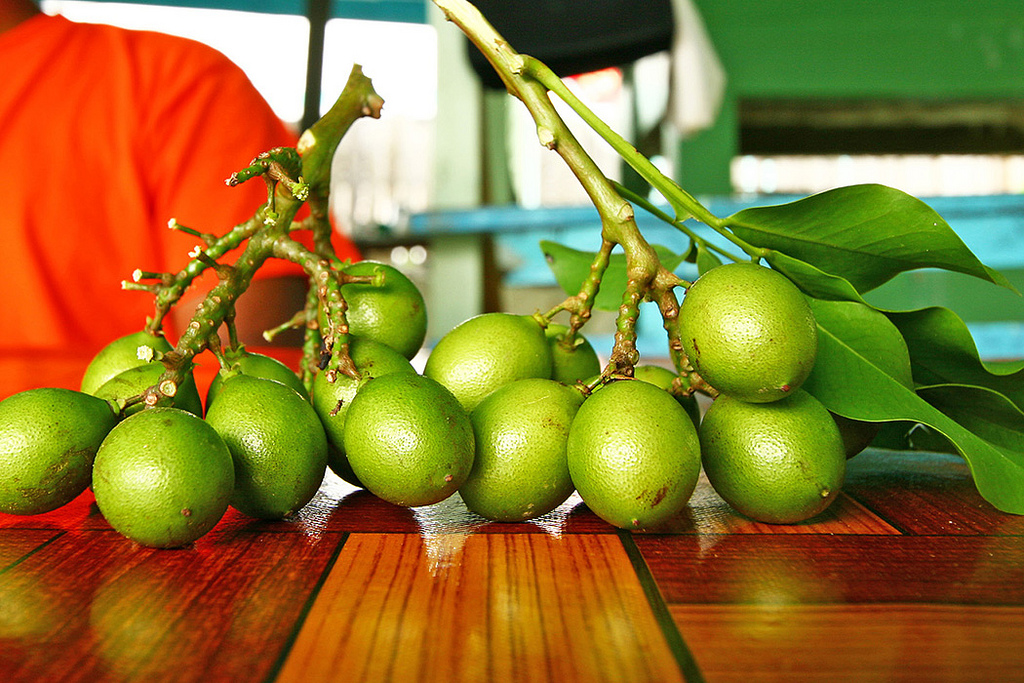
Genip | by KennardP
Genip is spelt and pronounced differently in many countries and languages. For example, in St. Kitts it is called skinnip, it’s called skinup in Grenada, kenip in Dominica, chennette in Trinidad, and the list goes on. In Guyana, the people call it genip. (Learn more about genip here!)
Five Fingers Yum
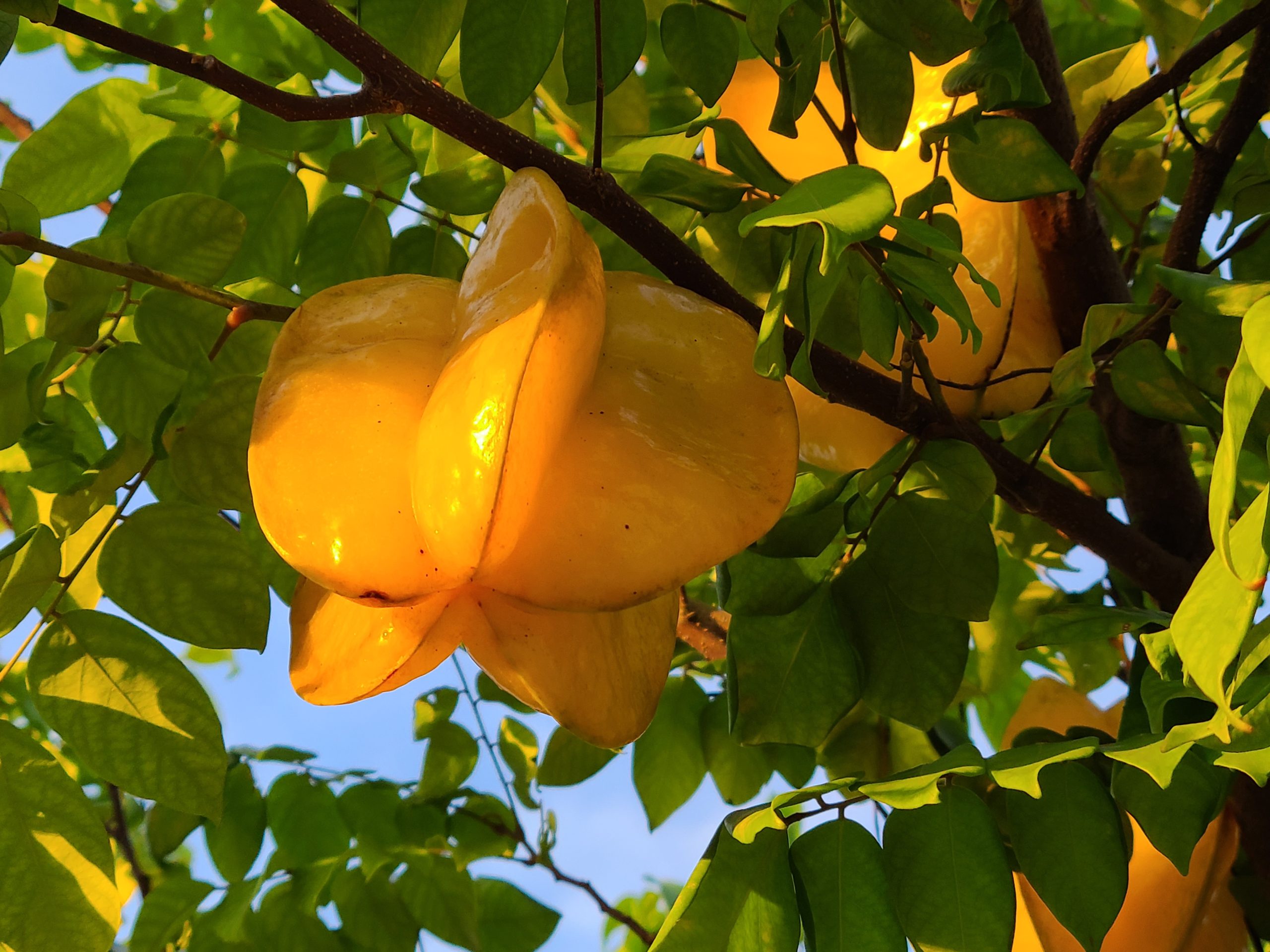
Five Fingers – Photo by Girendra Persaud/GxMedia
The taste is difficult to match, but it has been compared to a mix of apple, pear, grape, and citrus family fruits. Unripe five fingers are firmer and sour, and taste like green apples. Five fingers are known for their star shaped cross section; it is basically in the shape of a five-point star. Carambola (Avethoa carambola) is locally known as five fingers in Guyana and is also called starfruit. The fruit has a number of health benefits, click here to learn more.
This is not an exhaustive list of seasonal fruits in Guyana. Guyana, as a tropical country, is overflown with bountiful, colourful, fruiting trees. Many can relate that when they were younger, they would go from tree to tree – whether it was the neighbour’s tree or their family’s tree – they would climb it and pick whatever fruit they could reach.
Beyond the Bite:
This is just a glimpse into the vibrant world of seasonal fruits in Guyana. Each region and microclimate might offer its own unique varieties and specialities. So, the best way to experience this delicious adventure is to immerse yourself in the local markets, chat with friendly vendors, and embrace the spirit of discovery. Remember, the true magic lies not just in the taste but in the cultural significance and stories each fruit carries. So, grab your basket, open your mind, and get ready for a taste of paradise in Guyana!
Do you have any favourite seasonal fruits from Guyana? Share your stories and recommendations in the comments below!

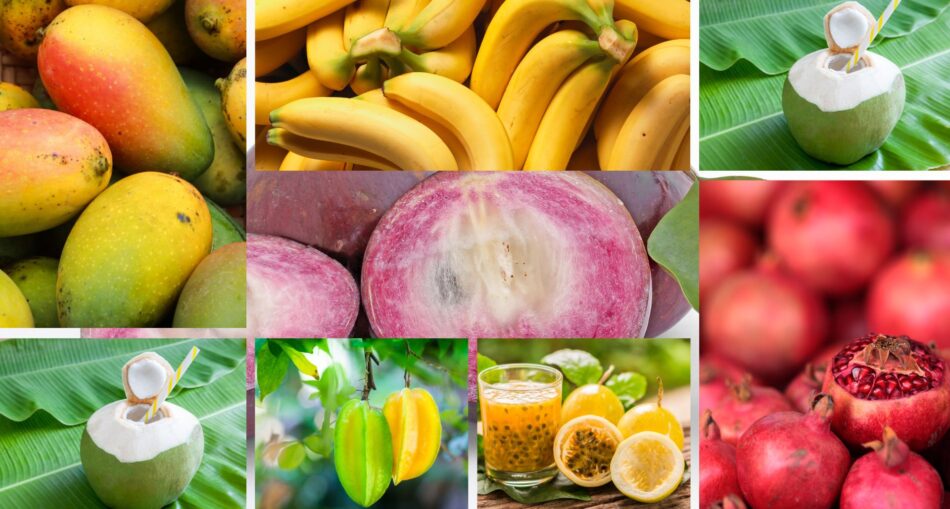






5 Comments
I would like to say that we have much more seasonal fruits in Guyana. I particularly like oranges, tangerines, and pineapples.
Owara is my favourite
I love this article
I love this not only because it is informative but because each fruit tells a unique story that is narrated vividly.
I like this article not just for its informative content, but also for its vivid narration of each fruit’s unique story.